Mermaids were around way before Ariel was singing with a Rastafarian crab about life under the sea and –unlike the Firebird, Yale, or Asidochelone- these folkloric creatures are gaining more and more momentum in contemporary culture…
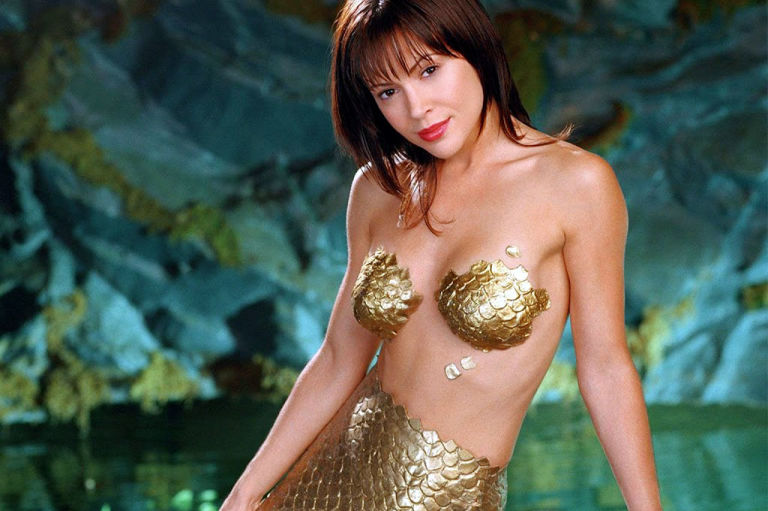
What little girl –on some level- has never wanted to be a mermaid? I can remember beach trips from my own childhood spent diving under the waves pretending I had fins and a beautiful singing voice. Even today there’s a lingering trace of Mermaidia –the long hair- when I lie by a poolside. And I’m not the only one. Mermaids have become a dominant part of popular culture, with images of the wondrous creatures appearing in film and TV, fashion, and even on the job market. No joke, you can actually have a career as a mermaid!
But most recently, they have been the inspiring subject of a charity calendar put together by the Newfoundland and Labrador Beard & Moustache Club to raise funds for Spirit Horse NL, a Newfoundland charity that offers therapeutic programs for people with mental health disorders through interactions with horses. The calendar features a group of gorgeously bearded men posing in homemade fishtails. The project has enticed over forty volunteers to get in on the action and everything about it is for a good cause. But the question that burns on my lips is why mermaids, or mermen specifically?
It turns out that Canada has a thing called Merb’ys: a combination of the words “mermaid” and “b’y”, which is the Newfoundland term for boy, and it’s as popular locally as water is to fish. According to NL Beard & Moustache Club founder, Hasan Hai, the project is a way to challenge gender stereotypes and support mental health awareness in the process:
“there’s a lot of gender stereotypes; big burly manly men and we can take a different take on what manliness and what masculinity looks like.”
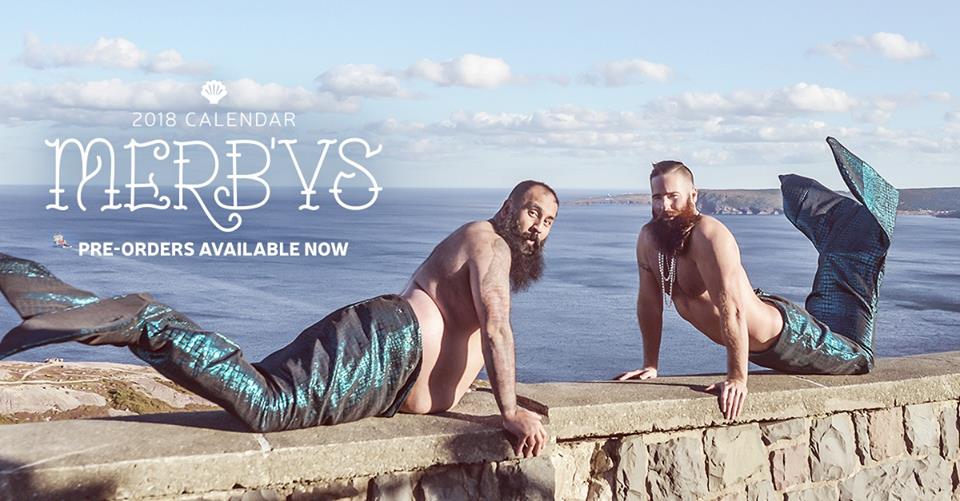
The fact that the folkloric mer-creature continues to be used as an inspiring image and metaphor in popular culture says that there is definitely something about it that appeals to us. For film and fashion, it could simply be the physical beauty of the mermaid. With the exception of the fourth Harry Potter book and a handful of horror movies, mermaids in film and TV are often ridiculously beautiful creatures with strong, adventurous characters and untamable lusts for life. Of course Disney’s little mermaid immediately springs to mind, but consider all those that came before her:
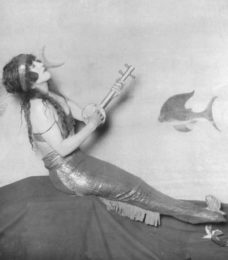
Alongside Annette Kellerman’s other achievements of pioneering the first women’s one-piece bathing suit (which got her arrested for indecent exposure when she wore it publically in 1907), being the first woman to attempt to swim the English Channel, and inspiring the art of sychronised swimming, she also had a long-running career in cinema. Her films The Mermaid and The Siren of the Sea are the first films to show an actress in a swimmable mermaid costume.
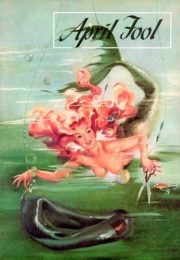
The 1940s saw a buxom pin-up mermaid – created by Joyce Ballantyne Brand – cause a stir when she splashed onto the front page of Sports Afield. Smiling and saving a helpless fish, the mermaid was panned by critics. Brand was accused of corrupting the magazine’s young male readership. There’s no record of how well that month’s edition did, but my guess is sales were up.
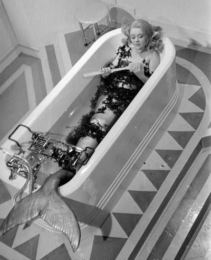
After Annette Kellerman, Hollywood indulged in its infatuation with mermaids – with Miranda in the film Miranda (1948) the most loved. She was a beautiful but wily witch who charmed a man into bringing her to London so she could see the human world and seduce as many men as she could.
Screen mermaids such as these are the ones that we continue to celebrate in popular culture with ideas of free-spiritedness, adventurous curiosity, and bravery to do one’s own thing attached to many representations of the creature, be it in collections from niche brands like Blackmilk or Adorkable Apparel to projects such as the NL charity calendar. Even the Starbucks’ mermaid has got some of that going on!
Obviously the modern mermaid is the one that is beautiful, adventurous, and unafraid to be herself: making her and her male counterparts perfect models for film, fashion, and photos. But – as Derek Zoolander’s Aveda ad shows – there’s also a certain level of humour that comes with fins. While women can put on a shiny tail and become a symbol of beauty and adventure, when men don the fins it becomes a laughing matter.
We say that laughter is the best medicine and while there is a serious agenda behind their charity project, the fact that all these bearded, burly –and mostly tattooed- men are dressing up in shimmering tails and taking the piss out of gender stereotypes, one cannot help but wonder if this is another example of boys being boys. We might think of dressing up as being a primarily girly pastime, but boys do it just as much. Little boys dressing in hats and pretending to be elegant ladies, teenage boys donning the girls’ school uniform for muck-up day after graduation, young men going to parties in drag or as female cartoon characters, and let’s not forget the free spirits of the ‘70s who blurred the gender line with glam rock. It seems that –for both sexes- dressing up as something or something else brings with it this level of freedom and ecstatic joy that results in bouts of hysterical laughter and funny photos.
Considering this, it makes sense that these pictures of burly men in shiny fishtails have gained the attention they have because we all love the things that make us laugh. There’s a reason why Ben Stiller’s exclamation, “mer-man, mer-MAN” is amongst the most quoted lines from that movie! Of course, all this could just come from the sheer weirdness of a creature that is human on top/ fish on the bottom and manages to breath above and below water despite the absence of gills.

But despite the anatomical inaccuracies of modern mermaid depictions it looks like the folkloric creature –along with everything it seemingly represents- is here to stay, providing inspiration for movie characters, fashion trends, charity projects, and company logos for years to come.
Have any thoughts on today’s Mermadia? Leave us a comment below!






